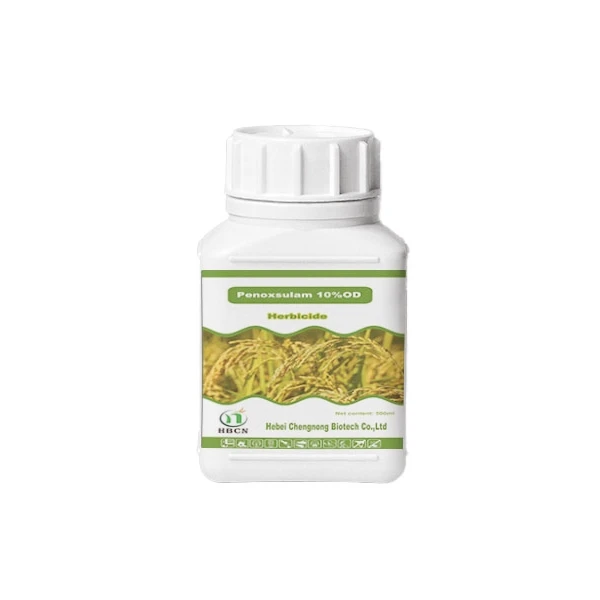
Dec . 01, 2024 00:13 Back to list
herbicide selection
Herbicide Selection A Vital Consideration for Sustainable Agriculture
Herbicide selection is a crucial aspect of modern agriculture, impacting crop yield, environmental health, and economic viability. As farmers strive to maintain high productivity while facing the challenges of weeds, pests, and changing climate conditions, the careful selection and application of herbicides become essential.
Understanding Herbicides
Herbicides are chemical substances used to control unwanted plants or weeds that compete with crops for nutrients, light, and water. They can be classified into two main categories selective and non-selective herbicides. Selective herbicides target specific weed species while leaving crops unharmed, making them ideal for use in diverse cropping systems. In contrast, non-selective herbicides kill all types of vegetation and are typically used in situations where complete vegetation control is needed, such as site preparation for new crops.
Factors Influencing Herbicide Selection
1. Weed Species Identification The first step in herbicide selection is identifying the weed species present in the field. Different weeds have varying levels of resistance to specific herbicides, and knowing this can significantly influence the effectiveness of the control measures. Utilizing resources such as local extension services can help in accurate weed identification.
2. Crop Type Different crops have different sensitivities to herbicides. A herbicide that is effective on one crop may damage another. Therefore, aligning herbicide selection with the specific crop being cultivated is vital. It's essential for farmers to have a clear understanding of the growth stages of both their crops and the weeds they are targeting.
3. Timing of Application The timing of herbicide application can dramatically affect its effectiveness. Early application is often more effective against young weeds, whereas late application may lead to more extensive weed populations. Moreover, the growth stage of the crop also determines when herbicides can be safely applied without causing injury to the crop.
herbicide selection

4. Environmental Impact The potential environmental impact of herbicides cannot be overlooked. Many herbicides can have adverse effects on non-target species, including beneficial insects, birds, and aquatic life. Selecting herbicides with lower toxicity levels and understanding their behavior in the environment helps in minimizing these impacts.
5. Resistance Management With the increasing reports of herbicide-resistant weed populations, integrating herbicide selection with resistance management strategies is crucial. Rotating different classes of herbicides, using tank mixes, and incorporating non-chemical control methods (such as crop rotation, cover crops, and mechanical weeding) are effective practices to mitigate the risk of resistance development.
6. Economic Considerations The cost of herbicides and their application must also be factored into the selection process. Farmers should evaluate the return on investment (ROI) for different herbicide options. In some cases, the cheapest option may not necessarily provide the best results in managing weed populations.
Best Practices for Herbicide Selection
To make effective herbicide selections, farmers can adopt several best practices
- Conduct thorough field scouting to identify weed species and their growth stages. - Consult local agronomists or extension services for recommendations tailored to specific conditions. - Prioritize integrated weed management strategies, combining herbicides with cultural, mechanical, and biological controls. - Stay informed about new herbicide formulations and emerging weed resistance trends.
Conclusion
In conclusion, herbicide selection is a multifaceted process that requires careful consideration of various factors including weed species, crop type, timing, environmental impact, resistance management, and economic factors. By making informed choices and adopting best practices, farmers can enhance their weed management strategies, ensuring sustainable agricultural practices that promote both high yields and environmental stewardship. As agriculture continues to evolve, the importance of effective herbicide selection will remain a key element in the fight against weeds and the quest for food security.
-
Herbicide Mesotrione: Advanced Herbicide Solutions for Corn Field Weed Control
NewsJul.12,2025
-
Buy Penoxsulam Herbicide - Selective Weed Control Solution for Lawns & Crops
NewsJul.08,2025
-
Malathion and White Oil Effective Insecticide for Citrus & Ornamentals
NewsJul.08,2025
-
Best Section Fungicide Solutions Effective Carbendazim & Copper Fungicides for Citrus Trees
NewsJul.08,2025
-
Types of Herbicides Explained Discover 5 Types of Selective Herbicides for Effective Weed Control
NewsJul.07,2025
-
Buy Bifen Chemical – Safe Termiticide for Dogs & Effective Pest Control Solutions
NewsJul.07,2025
